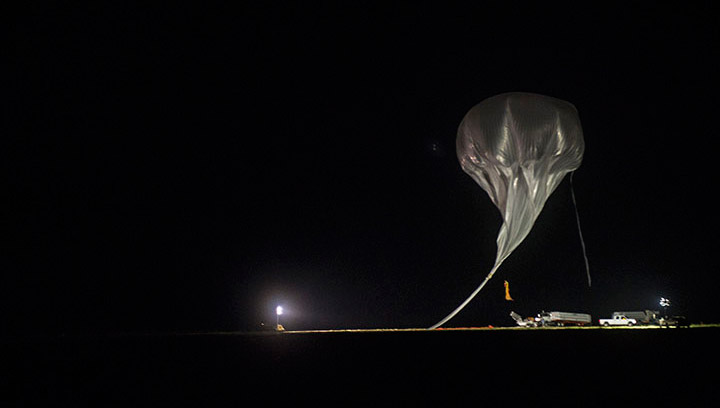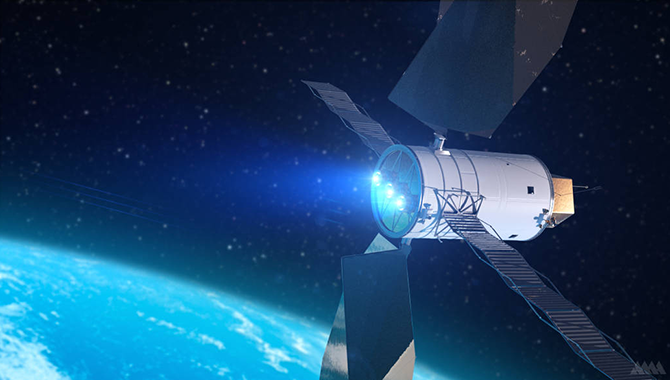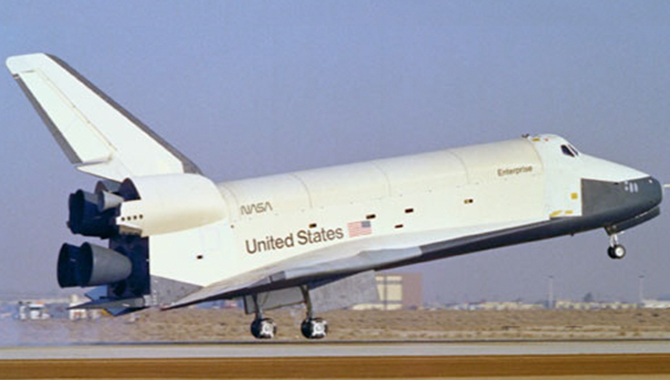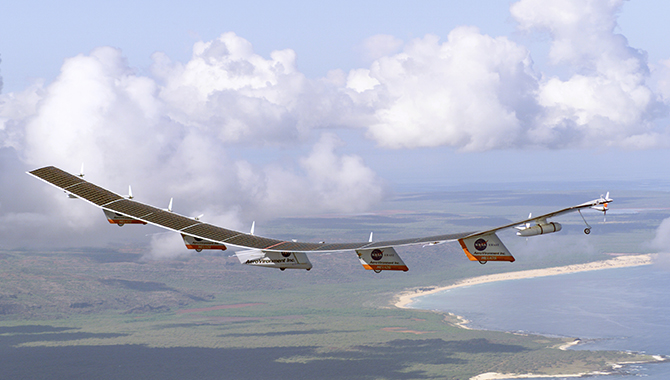
The first flight of the solar-powered, remotely piloted Helios Prototype 03 took place on June 7, 2003, from the U.S. Navy’s Pacific Missile Range Facility (PMRF) on Kauai, Hawaii.
Photo Credit: Carla Thomas
At 10:06 a.m. on June 26, 2003, a solar-powered flying wing set out to expand the boundaries of high-altitude, long-distance unmanned flight. Thirty minutes later, the project ended for good.
Helios Prototype 03 (HP03) was the last generation in a ground-breaking family of remotely piloted, solar-powered flying wing aircraft that were part of NASA’s Environmental Research Aircraft and Sensor Technology (ERAST) Program. ERAST, the agency’s first industry-led Joint Sponsored Research Alliance (JSRA), represented a novel business model for NASA. Its focus was on maturing unmanned aerial vehicle (UAV) technology in order to drive adoption for U.S. commercial purposes while establishing value in atmospheric science and Earth science applications.
One aspect of ERAST involved partnering with small aircraft manufacturers to establish the viability of high-altitude, long-endurance (HALE) UAV flight. Under the unique JSRA model, the program followed a normal vehicle development process but did so at an accelerated pace. The intent was to push new prototypes forward to advance technology quickly while remaining within modest budgets.
Over the course of the program, which began in 1994 and was managed by Dryden Flight Research Center (DFRC; now Armstrong Flight Research Center), NASA worked with California-based AeroVironment, Inc. on a series of solar-powered UAV prototypes. The first was the Pathfinder: a 100-foot flying wing with solar cells on the entire upper surface that set an unofficial altitude record for a solar-powered vehicle in 1995 and again in 1997. Pathfinder gave way to the Pathfinder Plus, which added 20 feet to the wingspan and two more electric motors, bringing the total to eight. Flying out of the U.S. Navy’s Pacific Missile Range Facility (PMRF) on Kauai, Hawaii, Pathfinder Plus set a new altitude record for solar-powered flight at 80,200 feet in August 1998.
Centurion, the next in line, was focused on breaking the 100,000-foot altitude barrier. With a five-panel, 206-foot wingspan, Centurion was larger than its predecessors. Fourteen electric motors powered it through three test flights out of DFRC. Based on its success at low altitudes, the program moved forward with the next generation: Helios.
Emerging budget constraints dictated a dual development goal for Helios. The first model, Helios Prototype 01 (HP01), would focus on high-altitude flight with the goal of reaching 96,000 feet. Based on the same airframe, a second prototype, HP03, would pursue the long-distance goal of continuous flight at 50,000 feet for nearly 100 hours.
Measuring 247 feet across six separate panels, the wingspan of HP01 exceeded that of a Boeing 747 jet. Each panel joint held an underwing pod that contained landing gear, battery power system, flight control computers, and data-capturing instruments. The aircraft was composed primarily of composite materials, including carbon fiber, graphite epoxy, Kevlar®, and Styrofoam. It was encased in a thin, transparent plastic skin. Like Centurion, HP01 relied on 14 electric motors powered by the sun.
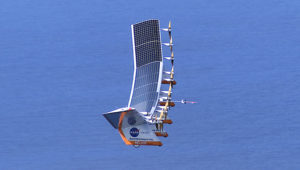
On August 13, 2001, the solar-powered, remotely piloted Helios Prototype 01 set a world record for reaching an altitude of more than 96,000 feet. During climb out from the PMRF, the aircraft’s flexible wing dihedral (upsweep) is evident.
Photo Credit: Carla Thomas
Following a series of low-altitude flights at DFRC in 1999, HP01 was fitted with new avionics and other upgrades, including a new solar array consisting of 62,000 cells. On 13 August 2001, the investment paid off: HP01 flew out of PMRF to reach the program goal of 96,863 feet above sea level, setting a world record for a non-rocket powered aircraft.
The next step was to achieve ERAST’s endurance goal. Unlike the previous vehicles in the program, the aircraft for this segment would require a power source in addition to solar arrays so that it could fly at night as well as during the day. NASA and AeroVironment started work on a regenerative fuel-cell system (RFCS) that would enable the aircraft to use hydrogen and oxygen captured during flight to power the vehicle after the sun went down. A prototype was built, but it proved unreliable. With time running out on the program, NASA and its partner decided to switch from the RFCS to a primary fuel-cell system (PFCS) based on commercially available components. Using this system, the aircraft would be capable of 7 to 14 days of continuous flight.
In 2003, the final year of ERAST, HP01 became HP03 when it underwent modifications to carry the experimental fuel-cell system. The airframe, which had originally been designed to support the light RFCS, was reinforced to carry three pods for the PFCS: one at the center of the wingspan plus a fuel tank at each of the wingtip panels. The wing span stayed at 247 feet, but the number of electric motors was lowered to 10 to make room for the PFCS pods. Like HP01, HP03 had a built-in upsweep of 10 degrees on the outer wing panels to enhance lateral stability as well as a slight upward twist at the wingtip to reduce the risk of stalling.
HP03 flew for the first time on June 7, 2003, through winds that were uncharacteristically mild. Intended to last for 30 hours at 50,000 feet, the flight was aborted about halfway through due to a leak in the coolant system that prevented the PFCS from functioning. While the flight was considered a success, the project team decided to modify the aircraft for the next flight based on concerns that its handling qualities would differ if flown under more typical wind conditions. The configurations changes included modifications to increase wing upsweep, known as dihedral, at low power.
Early on the morning of June 26, 2003, HP03 readied for its second flight out of PMRF. The objectives of the test were straightforward: climb to between 50,000 and 60,000 feet and take the PFCS through its paces, which included verifying stable operation at elevation and running it for at least two hours. Preflight testing began well before dawn. Shortly after 6:00 a.m., the aircraft was towed to the runway that would give its solar arrays the best exposure to sunlight. At the same time, the flight was officially given a “Go” by NASA and the AeroVironment team, although the weather forecaster pointed out that the predicted conditions suggested turbulence would be likely during climb out.
His concern focused on two shear lines: one in the south that would affect the aircraft after takeoff and one at approximately 35,000 feet. Shear lines indicated the presence of variable winds at right angles to the general direction of the wind that could produce turbulence and narrow the area in which the aircraft could safely fly. The concern was exacerbated a few hours later when a second measurement indicated a risk of turbulence and a report of whitecaps on the water confirmed the proximity of wind shear lines. Nonetheless, all measurements remained within the specified rules for the mission.
HP03 took off at 10:06 a.m. Clouds covered some parts of the runway, impacting the aircraft’s solar arrays and lowering its climb rate slightly. Thirteen minutes later, at 10:19 a.m., HP03 hit turbulence. It happened again at 10:22 a.m. and 10:24 a.m. The first event didn’t appear to cause a problem. The second and third events affected the aircraft’s operation. Briefly, the vehicle’s wing dihedral became larger than normal when its wings curved upward more than expected. At the same time, mild pitch oscillations occurred. The aircraft returned to normal operation before the crew noticed anything had changed.
Over the next few minutes, HP03 was forced to make a series of turns to avoid wind shear lines to the south and north. At 10:35 a.m., three problems emerged. First, the aircraft’s speed began to vary, increasing erratically. Second, its wing dihedral grew too high for its speed. Third, the pitch oscillation resumed. The exaggerated wing upsweep was a significant concern because the airframe was not built to withstand a dihedral of greater than 30 feet. The technical solution to decrease dihedral was to increase the aircraft’s speed, which is what the team did. For a moment, the dihedral decreased; and then it soared over 30 feet.
At 10:36 a.m., half an hour after takeoff, aerodynamic pressure on the aircraft cracked the foam on its wing. Solar cells and skin ripped off. Within seconds, the aircraft was torn to pieces as it plummeted toward the sea. At 10:37 a.m., the HP03 and its experimental fuel-cell system hit the ocean 10 miles from land. Although pieces of the aircraft were recovered, the PFCS was never found. The program, close to the end of its lifespan, was over.
The ERAST Program never achieved its endurance-flight goal with the Helios Prototypes. Nonetheless, the program broke multiple barriers to high-altitude unmanned, solar-powered flight, and the overall efforts were considered a success. A mishap board investigating the HP03 accident determined that the NASA/AeroVironment team had evolved into world leaders in HALE aircraft design, development, and testing. That expertise fueled future development of remotely piloted aircraft, contributing to the widespread U.S. adoption of UAV technology seen today.






